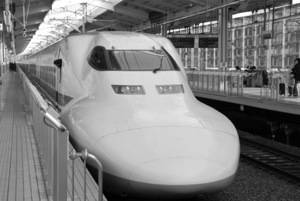Polycarbonate exhibits properties that make it ideal for use in transportation applications like aircraft compartment interiors, motor vehicles and passenger railcars.
- Polycarbonate is lightweight – 50% the weight of glass
- Polycarbonate exhibits high impact strength – approximately 200% of the impact strength of glass
- Polycarbonate has high transparency. Depending upon its thickness and the coating, the transmission in the visible spectrum can be up to 91%.
One of the concerns with using polycarbonate is that it will burn and does generate smoke when it burns. Flame and smoke specifications have been written to address these concerns relative to the application.
Aircraft specifications – FAR 25.853 Interior compartments.
Part 1 – Appendix F, (a), Part 1, (i), (ii) and (iv) specify the test requirements for materials used in specific locations of the aircraft.
(i) This section covers materials used for interior ceiling panels, interior wall panels, partitions, galley structure, large cabinet walls, structural flooring, and materials used in the construction of stowage compartments (other than under-seat stowage compartments and compartments for stowing small items such as magazines and maps). When tested vertically, with a flame being applied for 60 seconds, the average burn length may not exceed 6 inches and the average flame time after removal of the flame source may not exceed 15 seconds. Drippings from the test specimen may not continue to burn for more than an average of 3 seconds after falling.
(ii) This section covers materials used for floor covering, textiles (including draperies and upholstery), seat cushions, padding, decorative and non-decorative coated fabrics, leather, trays and galley furnishings, electrical conduit, air ducting, joint and edge covering, liners of Class B and E Cargo or baggage compartments, floor panels of Class B, C, E or F cargo or baggage compartments, cargo covers and transparencies, molded and thermoformed parts, air ducting joints, and trim strips (decorative and chafing) that are constructed of materials not covered in paragraph (a)(1)(iv) below. When tested vertically, with a flame being applied for 12 seconds, the average burn length many not exceed 8 inches, and the and the average flame time after removal of the flame source may not exceed 15 seconds. Drippings from the test specimen may not continue to flame for more than an average of 5 seconds after falling.
(iv) This section covers materials used as clear plastic windows and signs, parts constructed in whole or in part of elastomeric materials, edge lighted instrument assemblies consisting of two or more instruments in a common housing, seat belts, shoulder harnesses, and cargo and baggage tie-down equipment, including containers, bins, pallets, etc., used in passenger or crew compartments. When tested horizontally, with a flame being applied for 10 seconds, the average burn rate may not be greater than 2.5 inches per minute.
Various grades of Polycarbonate sheet can meet (i), (ii) and (iv).
Motor Vehicles Specifications – ANSI Z26.1/FMVSS205 (Glazing) and FMVSS302 (Interiors).
Plastics used as glazing in, but not limited to multipurpose passenger vehicles, trailers, slide in campers, motorhomes, rear windows of convertibles, car tops and motorcycle windscreens shall meet the requirements of:
ANSI Z26.1/FMVSS205 – Test 23 for materials 0.050 inch (1.27 mm) or less in thickness. This is a vertical rate of burn test. Materials must not exceed the limits in the table below.

ANSI Z26.1/FMVSS205 – Test 24 for materials 0.050 inch (1.27mm) or greater in thickness. This is a horizontal rate of burn test. Materials must not exceed 3.5 inches per minute (1.48 mm/s).
FMVSS 302 – This is a horizontal rate of burn test. Typically a rate of burn of 4.00 inches per minute (100 mm/s) is acceptable.
Almost all grades of polycarbonate will meet these specifications.
Passenger Railcar Specifications:
49CFR 238 Appendix B / NFPA 130 Tests for Flammability and Smoke, Bombardier SMP 800-C – Toxic Gas Generation.
Polycarbonate used in passenger railcars is required to meet the the criteria’s in 49CFR 238 Appendix B or NFPA 130. Both require the ASTM E162 and E662 test methods for flammability and smoke.
Bombardier SMP-800C is often required to measure toxic gas generation during combustion.
ASTM E 162 is a surface flammability test using a radiant panel heat source. When used as a light diffuser, window or windscreen, polycarbonate must exhibit an average radiant panel index (Is) of less than or equal to 100.
ASTM E662 is an optical smoke density test using a radiant energy source. Smoke density is measured after 1.5 and 4 minutes. When used as a light diffuser, window or windscreen, polycarbonate must exhibit a specific optical density (Ds) of less than or equal to 100 when exposed for 1.5 minutes and a specific optical density (Ds) of less than or equal to 200 when exposed for 4 minutes.

Bombardier SMP-800C measures the level of carbon monoxide, carbon dioxide, nitrogen dioxide, sulfur dioxide, hydrogen chloride, hydrogen fluoride, hydrogen bromide and hydrogen cyanide gases a material generates during combustion. Typically these measurements are made on the gases produced during the ASTM E662 test procedure.
Most grades of Polycarbonate will pass these specifications.

